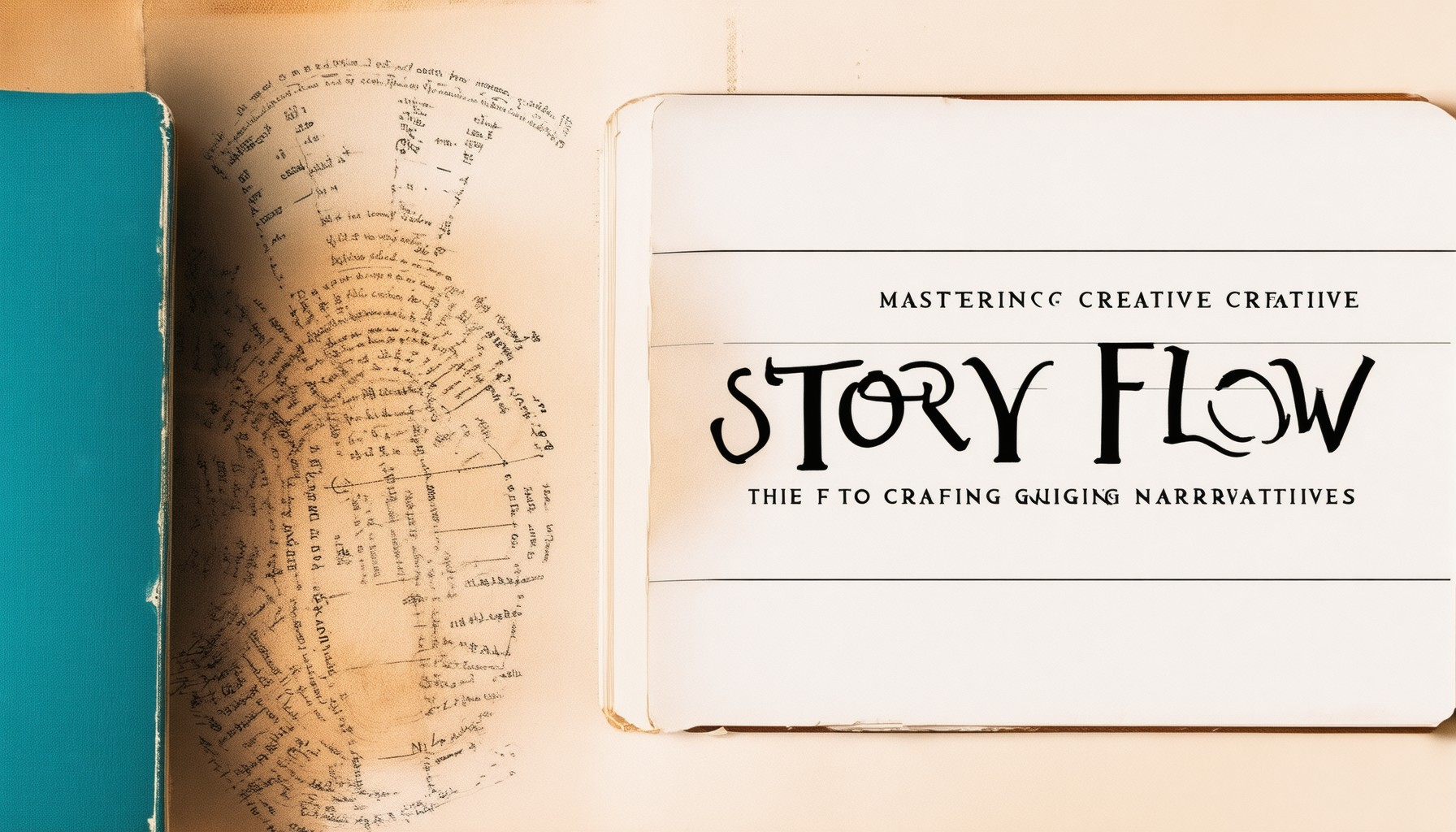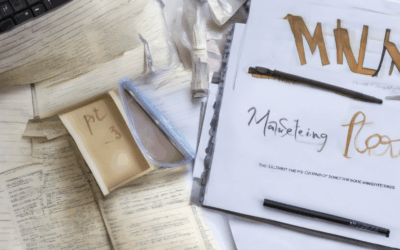Creating a compelling narrative is a delicate balance between inspiration and structure. Whether you’re crafting a short story, a novel, or even a poem, the flow of your story is what keeps readers engaged from the first page to the last. In this ultimate guide to crafting engaging narratives, we’ll delve into the intricacies of creative story flow, exploring what makes a story resonate with readers and how to maintain that rhythm throughout your work. From the basics of creative writing to overcoming common challenges, we’ll cover everything you need to know to master the art of storytelling. By understanding the essential elements of flow in writing, you’ll learn how to captivate audiences with your words and leave them wanting more. So, let’s embark on this journey together and unlock the secrets to creating stories that truly come alive.
Key Takeaways
- Craft Compelling Openings: Begin with a strong hook, such as a surprising fact, intriguing question, or vivid scene, to immediately engage readers.
- Develop Multi-Dimensional Characters: Create relatable and complex characters with clear motivations and growth arcs.
- Balance Pacing and Momentum: Alternate between high-octane moments and reflective scenes to maintain a steady narrative flow.
- Drive Conflict Thoughtfully: Introduce internal or external conflicts to propel the story forward and add depth.
- Choose and Stick to a Point of View: Select the most impactful character’s perspective and maintain consistency.
- Use Imagery Sparingly: Enhance mood and plot with vivid descriptions without overwhelming the reader.
- Foreshadow Effectively: Drop subtle hints to intrigue readers and set up future events.
- Conclude Powerfully: End with a resolution that feels earned and leaves a lasting impression.
- Revise and Refine Carefully: Edit for pacing and clarity, seeking feedback to refine your narrative.
- Define Your Story’s Purpose: Align your narrative goals (entertain, inspire, educate, persuade) to shape its direction.
- Establish a Vivid Exposition: Set the stage with descriptive language and essential context.
- Develop Meaningful Conflict: Identify the protagonist’s central tension and ensure stakes are high and personal.
- Create Belvable Characters: Develop well-rounded characters with shown strengths and flaws.
- Introduce Thoughtful Subplots: Add layers that complement the main plot and enrich the theme.
- Build Rising Action: Escalate tension gradually, using foreshadowing to keep readers engaged.
- Reach an Impactful Climax: Resolve the main conflict with intensity and leave a lasting impression.
- Conclude with Closure: Wrap up the storyline aligned with your goals and themes.
- Polish and Refine: Edit for clarity, remove redundancies, and seek feedback for improvements.
- Control Pacing at All Levels: Manage sentence structure, paragraph grouping, and chapter progression for a smooth flow.
- Vary Sentence Length and Structure: Use a mix of short and long sentences to create rhythm and mirror real speech.
- Establish a Strong Narrative Structure: Plan outlines, develop scenes, and track character arcs.
- Immerse with Sensory Details: Enhance reader experience by describing sights, sounds, smells, and tastes.
- Edit for Rhythm and Balance: Tighten pacing, balance action and description, and maintain a steady tempo.
- Avoid Common Pitfalls: Steer clear of overloading with short sentences, relying solely on long ones, and abrupt transitions.
By mastering these strategies, you can create narratives that captivate and transport readers, ensuring a seamless and engaging story flow.

What are the 5 R’s of Creative Writing?
-
Recognition
Recognize the world around you through sensory details and observations. This helps in crafting vivid scenes and characters.
-
Representation
Translate your ideas into symbols, metaphors, or imagery to convey deeper meanings and emotions in your stories.
-
Reflection
Analyze your work to identify themes, motifs, and character arcs. This helps in refining your narrative and understanding its impact.
-
Response
Connect with your audience by evoking emotions and creating relatable experiences. This makes your writing more engaging and impactful.
-
Research
Gather inspiration from various sources such as literature, history, culture, and personal experiences to enrich your writing with diverse perspectives and details.
What is Flow in Creative Writing?
Flow in creative writing refers to the smooth and natural progression of ideas, allowing readers to easily follow the narrative without confusion or disinterest. Effective flow ensures that the writing feels cohesive, engaging, and immersive.
Key Components of Flow in Writing:
- Clarity : Ideas are presented in a straightforward manner, making it easy for readers to grasp the meaning quickly.
- Coherence : The connection between ideas is logical, helping readers maintain their place in the narrative.
- Consistency : The tone, style, and pacing remain steady, preventing jarring shifts that disrupt the reading experience.
Examples of Flow in Action:
- In a well-written story, each chapter transitions seamlessly to the next, maintaining the reader’s interest.
- A novel with strong character development allows readers to connect deeply with the protagonist, enhancing emotional engagement.
Why Flow Matters:
Effective flow enhances readability and keeps readers invested in the story. It ensures that the writer’s vision translates into an accessible and compelling experience.
To further explore flow in creative writing, visit James Whitfield Thomson and discover practical tips and insights to elevate your writing craft.

What Are the 5 Stages of Storytelling?
The storytelling process is a complex yet fascinating journey that captivates audiences and conveys meaningful messages. Below are the five primary stages of storytelling, each serving a unique purpose in crafting an engaging narrative.
- Exposition :
- In this stage, the setting, characters, and the basic scenario are introduced. The exposition sets the stage for the story, providing essential background information that helps the audience connect with the narrative.
- Example: In a story about adventure, the protagonist is introduced along with the mysterious artifact they seek.
- Complication :
- The complication introduces conflict or challenges that the protagonist must overcome. This stage creates tension and drives the story forward.
- Example: The protagonist discovers the artifact is guarded by a powerful enemy, forcing them to take decisive action.
- Climax :
- The climax is the peak of the story where the central conflict reaches its highest point. This is often the most suspenseful and pivotal moment of the narrative.
- Example: The protagonist faces off against the enemy in a final battle, determining the outcome of the quest.
- Resolution :
- The resolution concludes the story, wrapping up loose ends and providing closure. The resolution answers unanswered questions and leaves the audience with a lasting impression.
- Example: The protagonist successfully retrieves the artifact, and the enemy is defeated, restoring balance to the world.
- Reflection :
- This stage occurs after the story has concluded. It invites the audience to reflect on the themes, emotions, and lessons presented in the narrative. Reflection helps reinforce the story’s impact and meaning.
- Example: A post-story scene shows the protagonist contemplating the journey and the lessons learned, resonating with the audience’s own experiences.
By mastering these stages, storytellers can craft narratives that engage, inspire, and leave a lasting impact on their audience. For deeper insights into refining your storytelling skills, explore our guide on Improving Your Narrative Techniques .

How to Make a Story Flow
A well-crafted story flows naturally, engaging readers from start to finish. Here are some proven strategies to enhance the flow of your narrative:
- Start with a Strong Hook : Begin with a compelling opening that grabs attention. A surprising fact, an intriguing question, or a vivid scene can hook readers immediately.
- Develop Characters Thoughtfully : Create relatable and multi-dimensional characters. Show their motivations, flaws, and growth through their actions and interactions.
- Balance Pacing : Alternate between high-octane moments and quieter, reflective scenes to maintain momentum. Outline your plot points and ensure each chapter builds upon the last.
- Introduce Conflict Strategically : Every great story thrives on conflict. Whether internal (a character’s struggle) or external (a battle against an antagonist), conflict drives the narrative forward.
- Choose a Clear Point of View : Decide whose perspective you’ll use and stick to it. Multiple POVs work well if seamlessly integrated, but focus on the most impactful character’s journey.
- Use Imagery and Description Sparingly : Paint scenes with vivid imagery, but avoid overwhelming the reader with excessive detail. Focus on what enhances the mood and plot.
- Foreshadow Effectively : Drop subtle hints about upcoming events or themes. This keeps readers engaged and curious about what’s next.
- End with Impact : Conclude your story with a resolution that feels earned. Leave readers with something to ponder or a lasting impression.
- Revise and Edit Carefully : Read your story aloud to identify pacing issues and awkward phrasing. Seek feedback from trusted readers or editors to refine your draft.
By applying these techniques, you can create a story that captivates readers and maintains their interest from beginning to end.
How Do You Structure a Storyline?
A well-structured storyline is the backbone of any compelling narrative. Whether you’re crafting a novel, screenplay, or marketing campaign, understanding the key elements will help you captivate your audience. Here’s a step-by-step guide to building an effective storyline:
1. Define Your Purpose
- Clearly identify the purpose of your story. Are you aiming to entertain, inspire, educate, or persuade? Knowing your goal will shape the direction of your narrative.
2. Establish the Exposition
- The exposition introduces the setting, characters, and background information. This sets the stage for the audience, providing essential context.
- Use descriptive language to paint a vivid picture of your world. Whether it’s a futuristic city or a quaint village, make it feel real.
3. Develop the Conflict
- Every great story has conflict. Identify the central tension or problem your protagonist will face.
- Consider the stakes. What happens if the protagonist fails? Make the conflict meaningful and personal to drive the narrative forward.
4. Create Belvable Characters
- Develop well-rounded characters with flaws, strengths, and motivations. Readers connect with relatable characters who undergo growth.
- Show, don’t tell. Use actions and dialogue to reveal character traits rather than stating them outright.
5. Introduce Subplots
- Add subplots to deepen the story. These can complement the main plot or provide additional layers of complexity.
- Ensure subplots tie back to the main theme, avoiding unnecessary distractions.
6. Build the Rising Action
- The rising action leads to the climax. Gradually increase the tension, escalating the stakes as the story progresses.
- Use foreshadowing to hint at future events, keeping the audience engaged and curious.
7. Reach the Climax
- The climax is the turning point where the main conflict resolves. It should be intense and impactful.
- Decide whether your climax will be a victory or a tragedy, leaving room for reflection.
8. Conclude the Story
- The resolution wraps up the storyline, providing closure. It should align with the story’s goals and themes.
- Leave a lasting impression with memorable final scenes that resonate with the audience.
9. Polish and Refine
- Edit your draft to enhance clarity and flow. Remove redundant elements and tighten the pacing.
- Seek feedback from others to gain new perspectives and identify areas for improvement.
By following these steps, you can craft a storyline that captivates, engages, and leaves a lasting impact on your audience. Remember, the best stories are those that evoke emotions and inspire action, whether through entertainment or inspiration.

How to Keep a Novel Flowing
Flow in a novel is essential to maintaining reader engagement and ensuring the story progresses cohesively. Here are proven strategies to keep your novel moving smoothly:
1. Control Pacing at Different Levels
Pacing is the heartbeat of your novel. It dictates the speed at which your story unfolds and keeps readers invested. Effective pacing requires attention to sentence structure, paragraph length, and chapter progression.
- Sentence Level: Alternate between short and long sentences to create rhythm and prevent monotony. Short sentences build tension, while long sentences allow for detailed descriptions and complex ideas.
- Paragraph Level: Group related ideas together to maintain focus. Avoid abrupt jumps between paragraphs that disrupt the flow.
- Chapter Level: Balance action-driven chapters with quieter, reflective ones that allow characters to develop and relationships to deepen.
2. Vary Sentence Length and Structure
Varying sentence length keeps your prose dynamic and engaging. A mix of short, punchy sentences and longer, descriptive ones creates a natural rhythm that mirrors real speech.
Example:
“She ran through the garden, her dress billowing behind her. The roses whispered secrets in the breeze.” — James Whitfield Thomson
3. Establish a Strong Overall Structure
A well-planned structure ensures your novel flows logically. Consider the following:
- Outlining: Create a detailed outline to guide your writing and maintain consistency.
- Scene Development: Build scenes that transition smoothly into one another, maintaining a cohesive narrative thread.
- Character Arcs: Develop characters who grow and evolve alongside the story, driving emotional investment.
4. Use Sensory Details and Descriptions
Immerse your readers by incorporating sensory details. Describe what characters see, hear, feel, smell, and taste. This enhances the reader’s experience and maintains a steady pace.
Example:
“The sun dipped low, casting golden hues across the fields. A gentle breeze carried the scent of lavender, mixing with the earthy richness of the soil.”
5. Edit for Rhythm and Balance
After drafting, edit to ensure your prose flows naturally. Remove redundant words and eliminate sentences that slow the pace. Balance action and description to keep energy consistent.
6. Maintain Consistency in Tempo
Keep the overall tempo of your novel steady. Fast-paced sections draw readers in, while slower moments allow for reflection. Avoid sudden shifts that jolt readers out of the narrative.
Common Pitfalls to Avoid
- Overloading with Short Sentences: Too many quick hits can tire readers and disrupt the flow.
- Relying Exclusively on Long Sentences: This risks confusion and slows the narrative unnecessarily.
- Frequent Abrupt Transitions: Jarring shifts in scene or tone can disorient readers.
Conclusion
Mastering the flow of your novel is a combination of careful planning, varied technique, and consistent execution. By paying attention to pacing, structure, and reader engagement, you can create a story that captivates and transports readers from beginning to end.
For more insights into crafting compelling narratives, explore James Whitfield Thomson’s literary platform , where you’ll find resources on storytelling techniques, narrative development, and the art of writing.





0 Comments